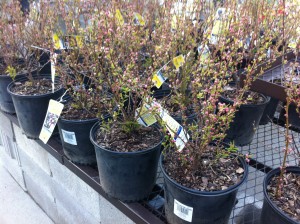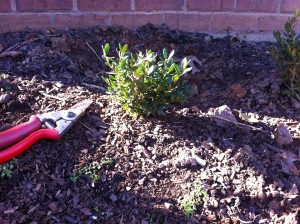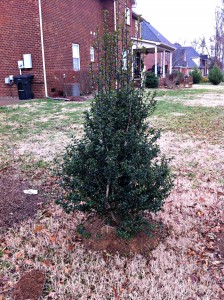You walk into a local garden center in Spring. The sun is shining, the temperature is perfect. All these plants look great. Where do I begin? It’s easy to become overwhelmed.
How do you determine the best plants and know what is a bargain?
Start with a plan. Before you arrive, determine what you’re looking for. Are you looking for seasonal color to decorate your patio? Choose flowers like annuals and perennials. Shop your favorite colors.
Do you need privacy from a neighbor? Shop the evergreens. Evergreens vary by color and leaf texture. Pick out your favorite and shop the different sizes.
The wrong way to buy begins with a lack of focus.
Size
The smaller the plant, the less expensive it will be. This is age related. Plants are priced depending on the age. The older, the more expensive. Some landscape plant varieties like American boxwood and Japanese maple grow slowly so they are more expensive compared to faster growing varieties like Korean boxwood and red maple.
If your budget is under $100, shop the small plants (1-3 gallon container size). Remember to have patience and allow the new transplants to grow and mature. The difference between a $50 shrub and $500 shrub is a few years. Get started today!
Bloom
Don’t always buy plants that are in bloom. “But the ones in bloom catch my attention” you might say. I’m certainly guilty of it as well. Most trees and shrubs only bloom for a short period each Spring or Summer. Be prepared to see your new purchase not bloom again for another year.
It depends if it’s an annual or perennial. Huh? Perennials come back from the ground every spring. Annuals live until a frost (~32 degrees Fahrenheit).
Sometimes the commercial grower forces plants to bloom at an early age. They look great on the retail shelf, but will fizzle once installed at your home. Remember to read the plant tags and double-check to make sure plants will continue blooming or growing.
Clearance Rack
Everybody loves a sale. I routinely walk into a retail garden center and shop the clearance first. Why? You can get the best bang for your buck. But, be careful, many plants are sick and diseased.
- Choose the plants that look tired from being in a container for too long. Huh? This means the roots have outgrown the container. The plant will flourish once installed and the roots have ample room to grow outward. An easy way to check roots is remove the plant from the container and inspect the root system. If serious girdling or root spinning is occurring, then you’ve found a root bound plant. Spread the roots apart before installing in the ground.
- Or choose plants that have been in drought stress from lack of water, but are recovering. Drought stress looks like wilted leaves with possible burns at the leaf tips. You’ll know wilted plants when you see them. Avoid sick plants unless you’re ready to nurse and coax the young transplant for up to a year.
- Avoid plants with dead roots. If the roots are not yellow or white, seriously consider passing on the plant. Some plant varieties have natural brown roots (Nandina).
Have you ever found a bargain and want to share your conquest? Please leave a comment below.







